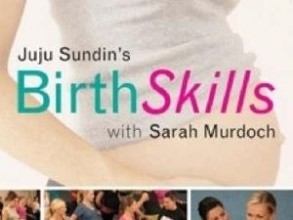Breast stimulation to induce labour
12 Oct, 2019Breasts are seen as sexual, meant for intimacy, to be put on display, dressed up in lace. Yet their primary purpose is to produce milk through mammary glands and feed human babies. Like most aspects of a woman’s body, breasts are sexualised to the point where even in birth, we shy away from using this amazing body part to assist in labour.
In her books Spiritual Midwifery and Ina May’s Guide to Childbirth, Ina May discusses the importance of breast stimulation to create oxytocin in the labouring mother, that powerful love hormone, which helps her uterus contract, cervix dilate and feel safe to give birth. Many women tell stories of instinctively needing a safe place to labour, like an animal nesting. It’s important that the people around you in labour are supportive and encouraging of any noises you may make, any needs you may have, and a mothers need for food, water and rest through labour.
Cultural attitudes towards breast stimulation
Sometimes, seeing a woman’s breast being stimulated in childbirth can seem wrong, illicit, sexual - in a situation where women are traditionally seen as pure and maternal, labouring to give birth to their child. Yet most babies get in their mothers through love, sex, touching, stroking, sensual intimacy. As Ina May says ‘It was loving sexy vibes that got them in there, and its the same loving sexy vibes that will get them out again’.
She includes a story in Ina May’s Guide to Childbirth from a doctor at a hospital who had a young couple and their friend come in, the woman in labour. The labour was stalling so the couple talked to the doctor about using breast stimulation to try and speed up the labour as they had read about it in Spiritual Midwifery. The doctor didn’t see an issue with it and left the room to see to other patients. When he came back with the nurse, they saw the husband and friend sucking the nipples of the woman and were both startled and shocked by this intimate scene. The nurse clutched the doctors arm for support feeling faint and they left the room to compose themselves and discuss the matter. By the time they came back in, the woman was well into labour and was ready to give birth. This experience changed the doctors view about breast stimulation and became something he advocated for in his own practice.
It’s important that you have people around you who you feel comfortable with, safe to nest and labour, safe to be yourselves and be intimate and support each other, whether or not that includes breast stimulation.
How does breast stimulation induce labour?
Stimulation of a woman’s breasts and nipples result in a surge of oxytocin hormone in her body which acts to reduce the uterus to its pre-pregnancy size. This results in uterine contractions and speeds up the first phase of labour, allowing the cervix to dilate further. Remember to use your breathing and ride out each contraction like a wave. Remember, its a surge, or a rush, everytime it contracts, there is also the release.
https://www.healthline.com/health/pregnancy/nipple-stimulation-to-induce-labor#stepbystep-guide
This article suggests speaking to your doctor about it first to ensure that its safe for you to do, in a low-risk pregnancy. You can perform nipple stimulation with a breast pump, your hands or partner’s hands, your partners mouth, or if you have another baby or toddler, feeding them would also be effective. It also suggests focusing on the areola and doing one breast at a time to avoid overstimulation.
Research on breast stimulation in labour
https://www.medicalnewstoday.com/articles/322326.php
This article discusses the use of nipple stimulation to induce labour and states that whilst it doesn’t really induce labour, the oxytocin results in uterine contractions, speeding up the first stage of labour. It mentions a few studies like this 2015 study in Sivas, Turkey, called “The Effect of Uterine and Nipple Stimulation on Induction With Oxytocin and the Labor Process”. It found that where women had nipple stimulation during a vaginal delivery, it shorted the first phase of labour. Women who had nipple stimulation had an average first phase of 3.8 hours, whereas women who did not have nipple stimulation had an average first phase of 6.8 hours.
The study also found that breast stimulation was more effective than synthetic oxytocin, as most of the women in the control group needed synthetic oxytocin like Pitocin. In contrast to the control group, none of the women using breast stimulation needed to have a c-section whereas 8% of women in the control group needed a c-section. I recently watched the documentary The Business of Being Born which talks about how once drugs are used to induce labour, this results in a cascade of medical interventions, like the need for an epidural because of the pain of contractions, which is far greater when labour is induced with drugs, and then the need for a c-section because the woman can’t feel anything and push with the epidural injection. So they end up getting c-sections they never really needed because labour was induced. Check out this documentary for yourself for more information.
The article also has some tips for hand stimulation of the nipples, but if in doubt, just be warm and intimate and supportive of your partner and do what feels natural to you. If you feel like sucking them, go ahead and do it!
https://www.ncbi.nlm.nih.gov/pmc/articles/PMC5813971/
Another study had breast stimulation performed by a midwife, for low risk pregnant women for three days and tested their salivary oxytocin levels. Women around the world have used breast stimulation successfully but due to our Western sensibilities we find it hard to accept this as a natural form of spontaneous induction of labour that should be the first option before women are offered synthetic options. 50% of women in Japan use breast stimulation during labour. This particular study tested a 3 day breast stimulation protocol in the hospital and found that it was well received and could be feasibly introduced as part of normal practice.
https://www.ncbi.nlm.nih.gov/pubmed/11687199
In this study by Kavanagh et all they performed a systematic review of 719 women from 6 trials and found that a low number of women were not in labour within 72 hours of day three of this stimulation exercise. They study suggests that it can be used with all low-risk women but should be avoided for high risk pregnancies until all potential consequences have been evaluated. It also found that breast stimulation reduces postpartum haemorrhage.
https://www.ncbi.nlm.nih.gov/pmc/articles/PMC4265511/
This study of 100 women in control group and breast stimulation group found that “Breast stimulation in low-risk primigravidas helps in cervical ripening and increases chances of vaginal delivery.” It also found that the outcomes for bishops score, mode of delivery and period of gestation were better for women who had breast stimulation. Additionally C-section for a failed induction was 3.63 times more common for women in the control group than the breast stimulation group.
Conclusion
Childbirth is a natural beautiful process that women have been doing for years. Do whatever feels right for you, whether that’s squatting, mooing, bathing, going for a walk during labour, eating, drinking and having cuddles and intimacy with your partner. As I mentioned before, it’s important to be comfortable and have supportive people around you, so feel free to shoo everyone else out of the room and have your partner stimulate your nipples if that feels good.
Cover Image by Igor Link from Pixabay
Get The Best Of Sleepy Roo Delivered To Your Inbox
Subscribe to my newsletter and get the latest info on baby sleep! You can unsubscribe at any time.



